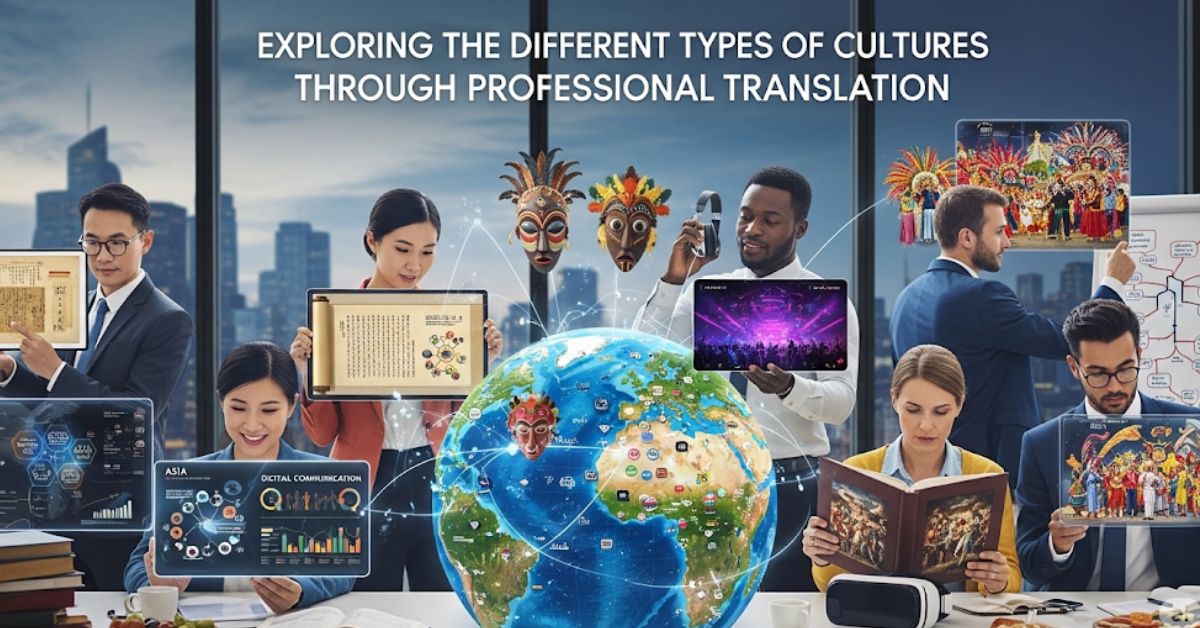Something is humbling about standing in an airport terminal and hearing dozens of languages swirling around you like music. A couple is whispering in Spanish. A businessman making a heated call in Korean. A child singing softly in Swahili. Each voice represents more than just a language; it carries stories, values, customs, and a sense of home.
To understand humanity, you have to begin with its diversity. And nothing captures that more vividly than the different types of cultures that exist across our globe. Some are loud and celebratory. Others are deeply introspective. Some worship silently, while others chant and drum. There is no one way to live, love, speak, or even greet someone. And that is what makes our world breathtakingly complex.
But here’s the problem: as global as we are, we still struggle to truly understand each other. That’s where translation services like those provided by The Spanish Group become not just useful, but essential.
Translation Isn’t Just About Language—It’s About Culture
When you think about translation, you might picture someone swapping words from English to French or Mandarin to Arabic. But that’s a shallow view of what translators really do.
Good translation isn’t about direct word-for-word substitution; it’s about conveying meaning, emotion, and context. And none of those things are universal. What might be considered polite in one country could be rude in another. What’s humorous in Japan might fall flat in Brazil. What’s taboo in one society might be celebrated in another.
This is why understanding the types of cultures involved in communication is just as important as the language itself. Translators are cultural mediators. They carry the responsibility of not just converting words but of respecting values, customs, traditions, and even taboos.
A business proposal translated for a client in Saudi Arabia must consider formality, hierarchy, and tone in ways that would be entirely different if it were intended for a tech firm in Sweden. A legal document for an immigrant from Ethiopia must be formatted and worded in a way that reflects both their native language and the expectations of a U.S. court.
And when the stakes are that high, immigration, international trade, and cross-border law, there’s no room for guesswork. That’s where a seasoned, culturally aware service like The Spanish Group becomes a critical bridge between worlds.
The Cultural Web: More Than Geography
So, what exactly do we mean by the “types of cultures”? It’s easy to assume that culture is simply tied to nationality, but that’s far from the full picture.
Culture weaves itself into every part of identity, religion, profession, generation, gender, region, and even online communities. A startup founder in Tel Aviv might have more in common with a tech entrepreneur in Berlin than with her neighbour. A Gen Z gamer in South Korea might be more aligned culturally with his counterparts in Toronto than with his older relatives in Seoul.
These kinds of culture are not just about where you’re from, but how you live, what you value, and why you see the world the way you do.
That’s why the list of cultures represented in modern translation work is growing more nuanced every day. It’s not just translating “German to English” anymore; it’s about recognizing when someone is from Bavaria versus Berlin, when they’re speaking formally or casually, when a phrase has a double meaning rooted in a local proverb.
At The Spanish Group, translations are assigned not just based on language fluency, but on cultural literacy. Their translators aren’t just linguists, they’re insiders, equipped with the lived experience and training to understand all the cultures in the world they’re translating between.
Why Culture-Specific Translation Matters Now More Than Ever
We live in an age where miscommunication can go viral and global in seconds. One poorly translated slogan. One email that forgets to honour a tradition. One missed cultural cue during an international negotiation. That’s all it takes.
Whether you’re a healthcare provider treating patients from multicultural backgrounds, a multinational brand entering a new market, or an immigrant submitting life-altering documents, you need more than just translation. You need someone who knows the different types of cultures behind the language who can spot what feels off, not just what’s incorrect.
Take, for example, translating healthcare materials. A literal translation of a medical instruction might be technically accurate, but still misunderstood if the patient comes from a culture that relies on holistic medicine or communal decision-making. Similarly, a courtroom interpreter needs to know how modesty or fear of authority might impact a witness’s speech patterns, especially in cultures where speaking openly about trauma is taboo.
Translation isn’t a transaction. It’s a relationship with the audience, with the text, and with the context.
Preserving Culture Through Language
There’s also something deeply noble about what professional translators do; they help preserve culture.
Languages are disappearing. Globalization, colonisation, and digital dominance have led to the erosion of indigenous and minority tongues. When a language dies, a piece of culture dies with it: its worldview, its humour, its lullabies, its prayers.
But with expert document translation services like those offered by The Spanish Group, these languages find new life. They are recorded, understood, and passed on through legal documents, educational materials, oral histories, and beyond.
Translation is memory. It’s how we record who we were, who we are, and who we’re becoming.
Seeing the Bigger Picture
Think of this: there are roughly 7,000 languages spoken on Earth today, and even more cultural subgroups that aren’t easily categorized. Every single one of them has its values, sayings, idioms, etiquette, rules of humour, and rituals of grief. They aren’t interchangeable. They aren’t hierarchical. They are all the cultures in the world, and they all matter.
To navigate that complexity with integrity, you need more than fluency. You need fluency with empathy. That’s the difference between amateur translation and professional, culturally conscious work.
It’s what The Spanish Group has built its reputation on, offering more than just document conversion. They deliver cultural clarity, context sensitivity, and a commitment to making sure that every voice, no matter how distant or different, is heard as it was meant to be.







